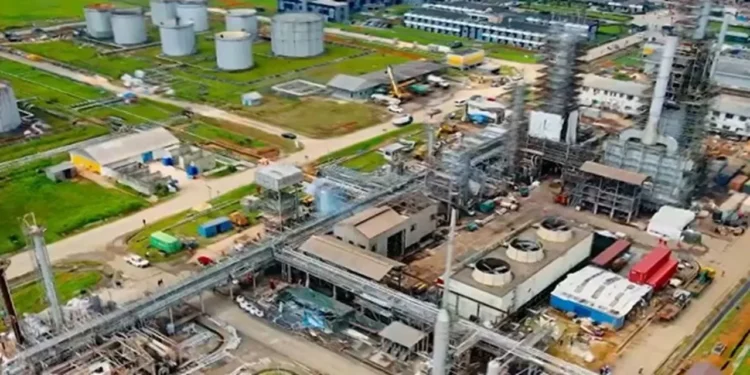Nigeria’s oil output slipped in September 2025 following a three-day strike by members of the Petroleum and Natural Gas Senior Staff Association of Nigeria (PENGASSAN), which disrupted production and export activities across several facilities.
Data released by the Nigerian Upstream Petroleum Regulatory Commission (NUPRC) on Saturday, October 11, showed that total crude oil and condensate production averaged 1.581 million barrels per day (bpd) in September, down from 1.63 million bpd recorded in August—a 3.09% month-on-month decline.
The figure comprises 1.39 million bpd of crude oil and 191,373 bpd of condensate, with the regulator attributing the shortfall to the workers’ industrial action and scheduled turnaround maintenance at two key production facilities.
Despite the temporary setback, the NUPRC noted that September’s output still represented a 1.61% year-on-year increase, compared to 1.55 million bpd in the same month of 2024, reflecting modest progress in stabilizing production levels.
The commission added that Nigeria achieved 93% of its OPEC quota of 1.5 million bpd during the month.
At its peak, combined crude and condensate output reached 1.81 million bpd, while the lowest daily production fell to 1.35 million bpd.
Production Breakdown by Major Streams
An analysis of the top eight production streams showed Forcados Blend leading output with 15.86% of total production, followed by Bonny Light at 13.31%, and Qua Iboe at 9.88%.
Other key contributors included Escravos Light (8.96%), Bonga (6.83%), Agbami Condensate (4.94%), Erha (4.55%), and Amenam Blend (4.2%).
While the temporary decline highlights Nigeria’s continued vulnerability to operational disruptions, industry analysts say the gradual recovery in year-on-year output underscores improving stability and investment momentum in the upstream sector.
































